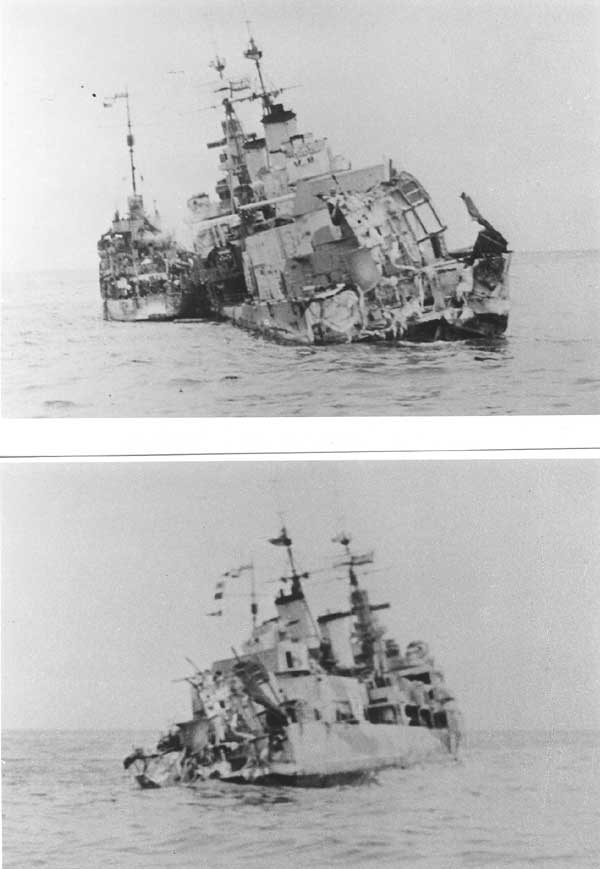|
Letters
HMS Edinburgh - Was there ASDIC contact? Dear Mac. I had been discussing the loss of HMS Edinburgh with a member of our local club who was a survivor when the ship was lost. Naturally we both enjoyed your Mac's Web Log on the subject and this survivor actually learned some new information concerning the events leading up to the loss. He is however upset by what he swears is an untruth concerning the ship's actions prior to loss. (This particular survivor was a submariner who had spent some time onshore in Russia and was returning to the U.K. on the Edinburgh - he was not a member of ship's regular company). He states that the claim that an ASDIC contact report was ignored by an officer(s) is completely untrue and he has first hand evidence to prove this. To establish historical fact would you be interested in his first hand account of his side of the story? He was a regular non enlisted man so he has nothing to hide. He is now over 80 years old but has vivid memoirs of what happened prior to, during and after the sinking - also life onshore in Russia. I would be happy to write his account for you and you could then judge for yourself. He is adamant in his belief that there was no asdic contact. Thanks for a great article and best wishes, Yours sincerely, Ernie Wide, Poynton, Cheshire, England.
Thank you for your message, yes indeed!! I would love to hear any account of the Edinburgh and her sinking, particularly if it throws new light on any segment I may have used or quoted on AHOY in my piece about the ship's loss etc. I always aim to be as factual as is possible from the research I do, and sources I may quote, but never claim infallability. Please have your friend relate as fully as possible his story as a survivor of that sinking, and fully relate the piece about any ASDIC contact, and his life ashore as a Submariner in Russia. Post war in UK schools, over 1947 and part of 1948 I qualified as a Specialist Torpedo Anti-Submarine Officer, hence I have a special interest in Submarines, and the Anti Submarine tactics, and weapons used against the U-Boats. How did he come to be taking passage home in the cruiser Edinburgh? Please ensure that he will be happy for us to publish his story on AHOY, it is important that we have his approval. With all WW2 veterans getting older, I myself am 82, it is important to get as much history as is possible recorded for posterity, and from my viewpoint, that particularly applies to our Naval History. I await your next instalment with pleasure. Thanks again for getting in touch. Kindest Regards, In my Article about the sinking of HMS Edinburgh when she carried two tons of Russian gold bound for the USA as payment for Materials sent to Russia to aid in their struggle with Germany, I made mention of a report about an alleged ASDIC report being ignored. That comment elicited these exchange of E-Mails and this reaction from a British Submariner ( who wishes to remain unnamed ) but he was taking passage in Edinburgh to return to England to undertake a Higher course as an advanced ASDIC operator. He was thus well placed to offer these remarks.
Dear Mac, Checked the site re HMS Edinburgh and it looks perfect and I know one old salt who will be pleased to see the record put straight. I have printed the whole thing for him. Best regards, Ernie Wide
|


